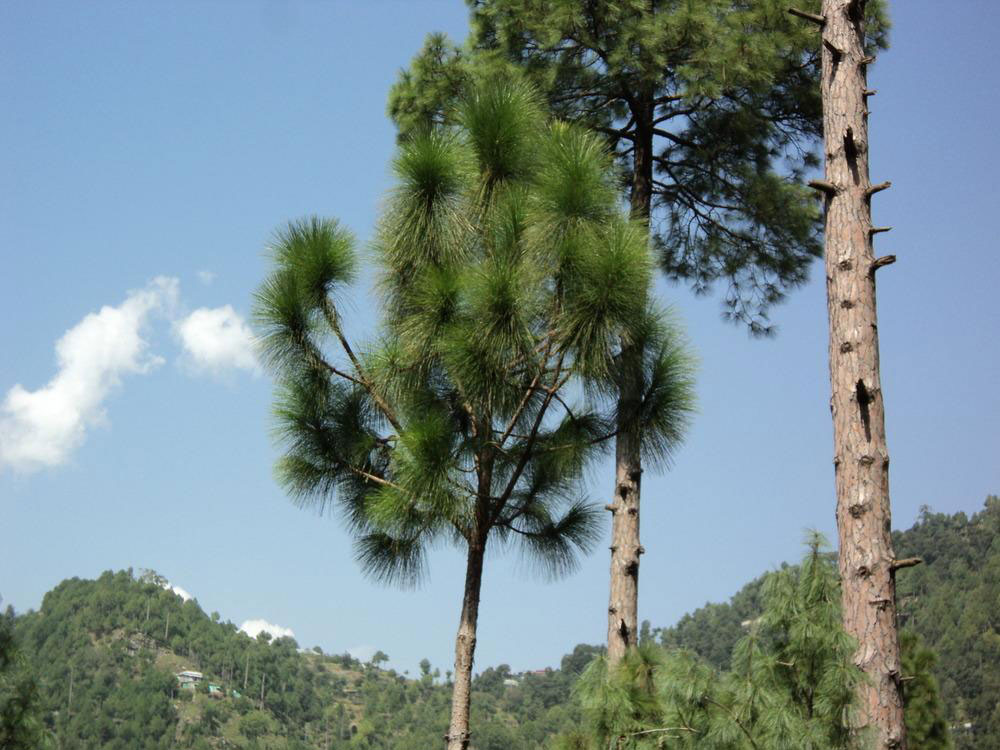Saral - Pine Tree

Pinus roxburghii
Summary
Scientific Classification
Kingdom: Plantae
Division: Gymnosperm
Class: Pinopsida
Order: Pinales
Family: Pinaceae
Genus: Pinus
Species: P.roxburghii
Scientific Name: Pinus roxburghii Sarg.
Common Names:
English: Pine, Chir pine.
Hindi: Chir.
Kannada: Saral.
Marathi: Saral.
Description:
- Habit and habitat: Trees to 55 m tall and over 100 cm. Bark dark red-brown, thick, deeply and longitudinally fissured, scaly brown, small, ovoid, not resinous. Forms extensive forests to 2700 metres. Does best on north slopes or on good soils.
- Distribution: Himal: Bhutan; India: Jammu and Kashmir, Punjab, Himanchal Pradesh, Uttarakhand; Nepal; Pakistan; Sikkim; Afghasistan; S Tibet; in mountains at 450-2300 m elevation. Limited to the monsoon belt between 72°-95°E and 27°-35°N (Wu and Raven 1999, Arya et al. 2000). Within its range, it is not only a common species, but is also the most widely planted conifer, and comprises 17% of the forested area of Nepal (Gauli et al. 2009).
- Morphology:
Leaf: 3 per bundle, slender, flabellate-triangular in cross section, 20-30 cm × 1.5 mm, resin canals 2, median, base with persistent sheath 2-3 cm long.
Cones: The cones are ovoid conic, 12-24 long and 5-8 broad at the base when closed, green at first, ripening glossy chestnut-brown when 24 months old. They open slowly over the next year or so, or after being heated by a forest fire, to release the seeds.
Seed: Seed scales oblong, thick, stiff; apophyses strongly swollen, conspicuously transversely ridged; umbo triangular, protruding. Seeds 8-12 mm long; wing ca. 2.5 cm long. Seed maturity Oct-Nov. Seed cones shortly pedunculate, ovoid, 10-20 × 6-9 cm. - Propagation: shoot cuttings of 2-0 seedlings.
- Importance:
Used for Timber, forestry. It is a valuable remedy used internally in the treatment of kidney and bladder complaints and is used both internally and as a rub and steam bath in the treatment of rheumatic affections. It is also very beneficial to the respiratory system and so is useful in treating diseases of the mucous membranes and respiratory complaints such as coughs, colds, influenza. Used for Charcoal; Dye; Herbicide; Ink; Lighting; Resin. A sweet edible manna exudes from the bark and twigs. Seed - raw or cooked, Not very nice, it has a strong flavour of turpentine and is only eaten as an emergency food. - Location: Botanical Garden.
 Trees of GSS Project supported by Makerspace Belgaum Website concept and designe by
Trees of GSS Project supported by Makerspace Belgaum Website concept and designe by